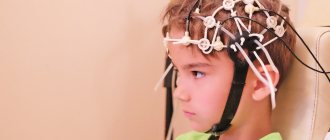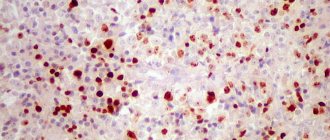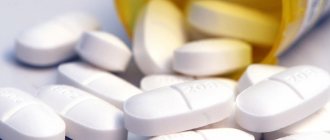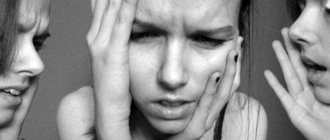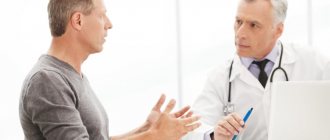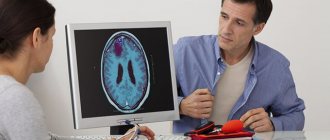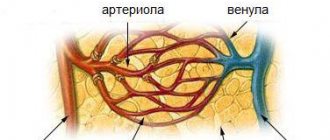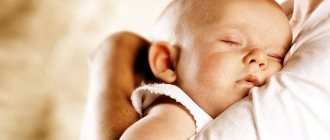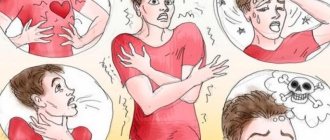Extrasystoles occur during VSD as a result of a violation of the autonomic innervation of the heart. At the same time, extraordinary contractions of the heart also provoke worsening of dystonia. These pathological conditions can be caused by bad habits, infections or toxins. In a patient, a combination of diseases provokes pain in the heart, weakness, loss of consciousness and ischemia of various organs and tissues, which can be complicated by a heart attack or stroke.
Dystonia occurs when autonomic innervation is disrupted due to various factors.
Causes of extrasystole during VSD
Increased sensitivity
Arrhythmia, similar to that which occurs with VSD, is characteristic of absolutely all people. Everyone misses a beat from time to time. People just don't notice it. Neurotics, on the other hand, notice all, even the most insignificant, changes in their physical condition. Therefore, the presence of extrasystoles is very clearly monitored. They are afraid of them. They begin to constantly think about them, thereby increasing both their anxiety and the number of missed shots.
Hyperventilation
Hyperventilation is one of the most common physiological manifestations of anxiety.
In this condition, there is a lack of carbon dioxide in the blood, which causes the blood to flow more slowly. To speed up blood flow, the heart begins to contract faster. This can lead not only to tachycardia, but also to an increase in the normal number of skipped beats.
Reaction to adrenaline
VSD is a physical manifestation of chronic anxiety. And anxiety is always a release of additional adrenaline.
The heart's reaction to this additional amount may be expressed in an increase in the number of extrasystoles.
Biliary dyskinesia
Various problems in the abdominal area, primarily problems with the gallbladder, can negatively affect the functioning of the heart. In particular, increase the number of extrasystoles.
Since people suffering from neurotic disorders very often have biliary dyskinesia, which is also of a nervous nature, they may also experience additional extrasystoles.
Relationship between extrasystole and VSD
With VSD, extrasystoles, extraordinary contractions of the myocardium, are irregular. Extrasystoles occur in people with a healthy heart and are manifested by fading and a sharp blow, weakness. The norm for extrasystoles per day is up to 200. In healthy people, as with VSD, extrasystoles are functional and transient. They are provoked by smoking, caffeine, anxiety, alcoholic drinks, heat, overeating.
Attacks of extrasystole during VSD are accompanied by fear of death, a feeling of interruptions, lightheadedness, and a short-term increase in blood pressure. However, they are not life-threatening and do not require special treatment. Calming herbal preparations have a good effect on functional extrasystole.
The causes of extrasystole can be hormonal disorders (hyperfunction of the thyroid gland), lack and imbalance of essential macroelements, intoxication, autoimmune diseases, chronic foci of infection, allergies.
The symptoms of neurocirculatory dystonia are similar to the symptoms of extrasystole: cold sweat, frequent urination, causeless severe fear. The causes of vegetative-vascular dystonia lie in disruption of the vasomotor center in the medulla oblongata, disruptions in the functioning of the hypothalamus and other subcortical centers.
The onset of vegetative-vascular dystonia often coincides with the transition period - puberty in adolescents, menopause or pregnancy in women. Extrasystole appears, as a rule, during puberty or menopause, after severe stress or after acute infections with intoxication (chronic infections).
With vegetative-vascular dystonia, the balance between the sympathetic and parasympathetic systems is disrupted. These departments have opposite effects on systems and organs, complementing each other in a healthy body. The sympathetic nervous system controls organs through the release of catecholamine mediators: adrenaline, norepinephrine. Catecholamines constrict peripheral vessels, centralize blood circulation, inhibit gastrointestinal motility, increase the frequency of myocardial contractions, and increase blood glucose levels. The parasympathetic nervous system acts through the neurotransmitter acetylcholine. Acetylcholine, acting on the nerve endings of blood vessels and organs, dilates blood vessels, promotes insulin secretion, stimulates the motor activity of the gastrointestinal tract, and slows down the activity of the heart.
The heart is automatic (able to work autonomously), although it is influenced by the autonomic nervous system.
The centers of the autonomic nervous system (ANS) are located in the midbrain (diencephalon). Violation of its regulation can occur in diencephalic (hypothalamic) syndrome. This pathology is a consequence of traumatic brain injuries, foci of chronic infections (especially in the tonsils), hay fever, and severe emotional shocks. Inflammation of the meninges, poor circulation in the circle of Willis, and osteochondrosis can also cause the syndrome.
With hypothalamic syndrome, the functioning of the autonomic nervous system will be disrupted, which will lead to panic attacks and extrasystoles. Moreover, panic attacks can represent both a vagoinsular crisis (predominance of the parasympathetic system) and a sympathoadrenal crisis (with the participation of the sympathetic ANS and adrenal glands). There is also a mixed vegetative-vascular crisis, hysteria-like with convulsions, vestibulopathic, migraine-like, pseudo-addisonian crises. Such disturbances cannot but affect cardiac activity. Often with diencephalic syndrome, extrasystole occurs.
Sympatho-adrenal crisis is characterized by activation of the hypothalamic-pituitary-adrenal axis. The crisis is provoked by sleep deficiency, irregular diet, consumption of caffeine-containing drinks, dehydration, and sometimes physical activity.
Poor blood circulation in the brain signals stress, which causes the production of corticoliberin in the hypothalamus. Corticoliberin activates the pituitary gland's synthesis of adrenocorticotropic hormone (ACTH). Under the influence of ACTH, the adrenal glands release cortisol and antidiuretic hormone (ADH). The release of the latter contributes to temporary fluid retention, which, after the attack has passed, is excreted in copious amounts in low-density urine (as in diabetes). A feeling of thirst appears, controlled by the hypothalamus.
Cortisol potentiates the vasoconstrictor effect of catecholamines, so during a sympathoadrenal attack, the limbs, tongue, and ears go numb. There is a trembling in the body, an inexplicable fear. Cortisol also increases blood glucose levels and enhances the activating effect of catecholamines on the heart. At the same time, the heartbeat increases (chronotropic effect), extrasystoles appear.
Vagoinsular crisis is provoked by emotional stress, non-compliance with sleep and rest schedules, and skipping meals. It is characterized by an attack of hypoglycemia or a sharp decrease in glucose levels (it may be normal), to which the brain is very sensitive. The predominance of parasympathetic influence (vagus, vagus nerve) can be caused by a sharp decrease in the level of contrainsular hormones and cortisol.
Typically, vagoinsular crises occur in the first half of the day, after the morning, maximum, wave of cortisol secretion has passed. The vessels sharply lose their tone, the pressure decreases, and there may be widespread pain in the abdomen. Heart contractions become less frequent, bradycardia is combined with extrasystoles. The skin becomes pale, sometimes with red spots. Inexplicable fear appears, coordination of movements is impaired, and there may be transient extrapyramidal symptoms (hyperkinesis or paralysis).
In a mixed crisis, sympathoadrenal and vagoinsular crises alternate. Interruptions in the work of the heart and extrasystoles are also typical.
The causes of extrasystole may also lie in autonomic reactions due to irritation of the vagus nerve, to which only people with neurocirculatory disorders are sensitive. Parasympathetic reactions are activated when the vagus nerve is stimulated. This can occur during gastroscopy; When passing through a gastroscope, not only the vagus nerve is excited: the esophagus is located next to the heart, its irritation can affect the functioning of the heart in people with VSD. The vagus nerve is closely connected with the digestive tract, therefore, in people with vagotonia (the predominance of parasympathetic influence), processes in the intestines will provoke extrasystoles against the background of bradycardia. These trigger processes can be eating, taking laxatives, or undergoing a colonoscopy (intestinal examination). Gastrocardiac syndrome serves as a striking example of the relationship between the gastrointestinal tract and heart function.
Functional extrasystole according to the localization of the ectopic focus is of several types:
- Atrial. The rarest form.
- Ventricular. Occurs more often than others.
- Atrioventricular.
Extrasystole during VSD is provoked by physical activity and anxiety. Her attack can be easily stopped with herbal preparations and cessation of physical activity that provoked the attack.
Supraventricular extrasystole and its treatment
Extrasystole is a condition related to heart rhythm disturbances, or arrhythmias, which are expressed by extraordinary contractions of the heart or its parts. Depending on the location of the source of excitation, it can be ventricular, atrial, atrioventricular.
Supraventricular extrasystole, or supraventricular, is characterized by the fact that premature impulses arise in ectopic foci located in the upper parts of the heart (atria) or in the septum between the ventricles and atria, which is called the antiventricular. As a result, incomplete additional contractions of the heart occur.
Frequency per minute
- single (up to five extraordinary reductions),
- multiple (more than five),
- group (several extrasystoles in a row),
- doubles (two in a row).
By time of appearance
- early (with atrial contraction),
- average (between the time of contraction of the atria and ventricles),
- late (with contraction of the ventricles or with complete relaxation of the heart).
By order
- ordered (alternating normal contractions with extrasystoles),
- disordered (there is no pattern).
Signs
With supraventricular extrasystole there are often no complaints. In some cases, the disease causes the following symptoms:
- lack of air, shortness of breath;
- interruptions in the work of the heart: a feeling of “reversals” of the heart or beats out of rhythm;
- dizziness;
- general weakness.
In children, supraventricular extrasystole most often occurs without any symptoms. Complaints usually come from older children. The child may experience weakness, irritability, fatigue, dizziness, and a feeling of heart failure.
Treatment
If there are no organic heart diseases and the patient has no complaints, then specific treatment for supraventricular extrasystole, as a rule, is not carried out. Therapy is usually indicated when symptoms are present and poorly tolerated.
You can also read: Permanent form of atrial fibrillation
First of all, the doctor assesses the number of extraordinary heart contractions per day. A single extrasystole does not pose a health hazard. Then you need to make sure that there are no organic heart diseases. If the patient has subjective complaints and does not tolerate them well, sedatives may be used.
The doctor should evaluate the advisability of taking antiarrhythmic drugs. The fact is that they have many side effects, and therefore the treatment can become more dangerous than the disease itself. Rare supraventricular extrasystole (several tens or hundreds of contractions per day) does not require taking such serious medications.
Thus, in the absence of complaints and diseases, the patient is recommended:
- Eat right, that is, exclude preservatives, fatty, fried, spicy, hot foods. Eat more plant foods rich in fiber.
- Eliminate bad habits (alcohol, smoking, energy drinks).
- Avoid stress and exercise in moderation.
- Ensure restful and sufficient sleep.
- Spend more time outside.
In the presence of heart disease and severe symptoms, conservative treatment with glycosides and antiarrhythmic drugs is indicated, which are selected strictly individually.
If medications do not help and the patient does not tolerate extrasystole, surgical treatment is performed.
This may be an open operation in which ectopic lesions are removed. As a rule, it is performed when intervention for heart valve replacement is required.
Another type of surgical treatment is radiofrequency ablation of lesions using a catheter, which is inserted into a large blood vessel, an electrode is passed through it and the area where the pathological impulse occurs is cauterized.
Possible complications
There is an opinion that frequent supraventricular extrasystole, characterized by a large number of extraordinary contractions of the heart, can lead to heart failure, changes in atrial configurations, and atrial fibrillation after several years. According to some reports, convincing evidence on this matter has not yet been received. In rare cases, supraventricular tachycardia may develop.
Forecast
Supraventricular extrasystole usually indicates a good prognosis. It does not lead to sudden death, like ventricular death, in which such a risk exists in the presence of organic heart disease.
Modern diagnostic methods
ECG . Any person who suspects a rhythm disorder will seek help from a doctor. In most cases, doctors recommend that such patients undergo an ECG first. However, the trouble is that an electrocardiogram is not able to detect this disease, unless a person has an attack during the study. Otherwise, the ECG results will be quite normal and normal.
Taking an ECG
Ultrasound . A more modern method, which shows greater effectiveness, is ultrasound examination of the heart. Different distances between contractions of the heart muscle will help determine the presence of extrasystoles. However, the research must be done carefully. After this, the patient will be able to hear an accurate diagnosis. Any other research is completely useless. Of course, the state of panic that haunts the patient when a malfunction in the heart is detected is completely normal. But you shouldn't give in to him. After all, any other research is guaranteed to be useless.
What causes the difficulty of diagnosis during research? Functional nature of extrasystoles. After all, the disease begins to actively manifest itself in certain situations. For example, when a person is very scared. But it is simply impossible to conduct research under such conditions. After all, no one will specifically scare you to see if your heart rate will change. Moreover, this is also ineffective. Because even a completely healthy person can experience a disruption in rhythm when frightened.
Symptoms
Extrasystoles during VSD are associated with a nervous disorder and manifest themselves:
- in an anxious state;
- irritability:
- increased excitability;
- panic attacks;
- shortness of breath and lack of air;
- general weakness and dizziness.
Extrasystole on the ECG
If, during VSD, patients have bouts of fever often followed by chills, then in combination with an abnormal heart rhythm, these phenomena are further aggravated, exhausting the body.
A common symptom that develops against the background of extrasystoles in dystonia is insomnia. It occurs against a background of anxiety, and together with nightly interruptions in heart rate, leads to panic attacks. In this case, sedatives are used to relieve this condition.
Arrhythmia with VSD is accompanied by both tachycardia (rapid heart rate) and bradycardia (slow heart rate). Extrasystole varies according to the area in which the source of excitation is located: ventricular, atrioventricular, atrial.
Extrasystoles are rare - up to 5 times/min; medium – up to 15 times/min; frequent – more than 15 times. In addition, they also differ in rhythm, when extrasystoles alternate with normal heart beats (bigemia), there are two heartbeats per extrasystole (trigemia) and it rarely happens that an extrasystole follows every third beat
This is important because when prescribing treatment, the area of localization and the shape of the systole are taken into account
Interruptions of the heart rhythm during VSD are functional in nature, therefore, not cardiac drugs, but sedatives and sedatives are used for treatment. But this is only true if the heart is completely healthy. If deviations in the cardiovascular system are observed, then complex therapy is carried out to support the heart and normalize the nervous system.
Causes and symptoms
Before considering the causes of extrasystole, it is necessary to mention that additional contractions can be both functional and organic. If we talk specifically about extrasystoles belonging to the organic type, then their cause is heart disease. In this case, diseases can be chronic, congenital or even acquired. It doesn't matter at all.
Causes of dystonia
But if we are talking about extrasystoles during VSD, which belong to the functional type, then they can be provoked by neurogenic factors . Among these factors are:
- menstruation;
- drinking large quantities of invigorating drinks that contain caffeine, including energy drinks;
- stress and emotional overexcitement;
- overwork (both physical and emotional);
- bad habits (smoking and alcoholism).
Among the dangerous factors that can provoke the appearance of this unpleasant illness, doctors also name infectious diseases that cause a significant increase in temperature. Moreover, the causes of the development of VSD, neuroses and extrasystole are closely related. For example, the source of the development of the above-mentioned ailments is stress. But not the one that a person manages to throw out along with anger. In this case, we are talking about the stress that a person consciously suppresses. It “settles” and gives complications over time. Some doctors even compare such stress to real poison, which gradually poisons the body.
And although the disease does not really pose a threat to the lives of patients, doctors note that it can bring some discomfort to it. After all, extrasystole with VSD is accompanied by unpleasant symptoms :
- weakness and fatigue;
- pale skin;
- sweating;
- increased anxiety;
- inability to breathe deeply;
- frequent dizziness, which can cause fainting.
Of course, the above symptoms are not critical. But they really can bring some discomfort into the patient’s life.
Features of extrasystole in dystonia
Extrasystoles accompanying VSD are predominantly episodic. As a rule, they appear in people with a healthy heart. The main sign of an extraordinary contraction is the appearance of a sharp “failure” in the chest, and then a jolt, sudden weakness.
Doctors believe that several dozen extrasystoles per day during exacerbation of VSD are normal. But the frequency also depends on the influence of external factors. Hot weather and overeating increase the autonomic reaction of the heart.
The peak appearance of the first signs of VSD occurs during periods of increased hormonal activity:
- adolescence in adolescents;
- pregnancy;
- the onset of menopause in women.
Symptoms of extrasystole
This disease may be accompanied by a delay in the functioning of the ventricles, causing their accelerated contraction. By the way, the patient may feel rhythmic tremors in the chest. He can notice inversions or somersaults, feel the gaps between pulsations. People generally describe functional arrhythmia as a feeling of increased anxiety, weakness, lack of oxygen, and increased sweating.
Group extrasystoles can turn into coronary arrhythmia, causing the development of paroxysmal ventricular tachycardia, and with pericardial tachycardia - contraction of the atrium. The disease can also develop into atrial fibrillation, especially if the patient was previously diagnosed with pericardial node overload or dilatation.
Neither extrasystole nor VSD detected in a person poses a real threat to the patient. But, undoubtedly, such conditions will significantly reduce the quality of normal life. Extrasystole manifests itself:
- increased sweating;
- general weakness;
- inability to breathe completely;
- pallor of the limbs, skin of the body and face;
- anxiety;
- fainting as a result of developed oxygen starvation of brain cells, as well as a reduced amount of blood that is ejected by the heart.
Extrasystoles are cardiac companions of VSD
Extraordinary contraction of the heart muscle (extrasystole) is a subtype of arrhythmias that are harmless if they are born in the sinus node and do not occur frequently.
Extrasystole often appears for no apparent reason, unexpectedly. People suffering from VSD often encounter its manifestations after:
- intense physical activity or during periods of rest;
- drinking drinks containing large doses of caffeine;
- stressful situations, emotional stress.
The physiological reason is the appearance in the heart of an additional source of excitation, in which electrical impulses are generated. They cause extrasystoles, “wedging” between the impulses emanating from the sinus node.
Due to the extraordinary contraction, the “resting” phase of the heart muscle, diastole, decreases. The chambers of the heart do not have time to fill with enough blood. This can negatively affect the oxygen saturation of the body, which is undesirable in case of vegetative-vascular dystonia.
It has been noted that the shorter the time interval between normal systole and extraordinary systole, the lower the volume of cardiac output. Frequent extrasystoles lead to a decrease in cardiac output.
Causes
The occurrence of the disorder in question in patients can be facilitated by certain heart diseases - acquired, congenital or chronic. Extrasystoles formed during VSD are functional in nature, representing the result of a neurogenic factor.
Doctors identify the following reasons causing the development of the described condition:
- myocardial diseases;
- frequent consumption of drinks that have a high caffeine content;
- emotional or physical fatigue;
- diseases that are associated with the functioning of internal organs;
- smoking and drinking alcoholic beverages;
- nervous stress;
- menstrual cycle;
- damage to the central nervous system;
- infectious diseases that may be accompanied by fever;
- disruption of the nervous regulation of the functioning of the cardiac system.
In addition, possible progression of the disease cannot be ruled out, especially if the patient experiences degenerative changes, as well as inflammatory processes that are associated with insufficient blood supply to the heart.
Sometimes the disease can begin due to an intracellular ion imbalance resulting from a lack of the optimal amount of sodium, magnesium, potassium and calcium in the body. Extrasystole can develop during the formation of heart disease, myocardial dystrophy, myocarditis, as well as in ischemic diseases.
An additional source of development of extrasystole during VSD is called suppressed stress. Under the influence of accompanying symptoms, negative energy splashes out, which leads to destabilization of the functioning of individual organs or the entire organism. In neurotic conditions, extrasystoles, due to certain reasons, can “invade” the central nervous system, indicating the development in the patient:
- sudden attacks of anxiety;
- causeless manifestation of fear;
- unreasonable irritability.
Manifestations of irregular heartbeats usually do not pose any threat. The only exceptions will be people with existing cardiovascular diseases.
Acute circulatory failure can be caused by frequently recurring similar conditions. Thus, existing ventricular extrasystoles can pose a great danger, since there is a threat in which they often lead to ventricular fibrillation, which can cause sudden death.
Extrasystole is a contraction of the heart that occurs out of turn, i.e. rhythm failure. In medicine, such cardiac arrhythmias are divided into areas of origin - in the atria, ventricles, etc. However, patients with vegetative-vascular dystonia do not have organic heart diseases, so such sudden blows from the inside have slightly different characteristics.
Extrasystoles with VSD:
- Ventricular problems occur more often due to mental imbalance and failure of the central nervous system. Both changing weather and excessive emotions (for example, joy) can provoke an attack. With dystonia, arrhythmia often occurs in coffee drinkers, because... Calcium is washed out of the body when drinking excessively.
- Supraventricular is considered a natural phenomenon for dystonics. They occur against the background of everyday stress, lack of sleep, and deficiency of calcium, magnesium, and sodium in the body. With the abuse of diuretics and antiarrhythmic drugs, which are not necessary for autonomic disorders, the risk of massive heart strokes is higher.
Extrasystole during VSD appears in the presence of provoking factors. They can be caused by various circumstances. For example, significant overwork, neuroses, alcoholism, drug use, abuse of coffee and strong tea. That is why, in order to avoid extrasystole during VSD, you should definitely reconsider your lifestyle.
There are other reasons that have nothing to do with psychogenic factors. These include heart disease, osteochondrosis, ischemia, mitral valve prolapse, heart failure, metabolic problems, and cardiosclerosis. It is important to carry out timely prevention of these diseases so that you do not have to suffer from negative consequences later.
It is worth noting that specific moments can intensify the manifestations of the disease. We are talking about fever, allergies, infections, and poisoning. It also happens that extrasystoles occur due to taking medications. For example, due to diuretics, antidepressants and sympatholytics.
Symptoms and diagnosis
Patients suffering from a disorder of the autonomic nervous system consult a doctor with the following symptoms:
- With ventricular extrasystoles, the blows to the chest from the inside are strong, they are interspersed with long pauses. The patient experiences either cold sweat or fever. From the fear of death, numbness and panic sets in, because a comfortable position cannot be found. My heart jumps out of my chest.
- With supraventricular failure, increased heartbeat occurs in the supine position. It either freezes or gives out more shocks.
- Common symptoms are dizziness, lack of air and difficulty breathing, numbness of the limbs, and general weakness.
All these signs of tachycardia and bradycardia do not pose a risk of sudden death, since VSD is not associated with organic damage to the heart. Extrasystoles in dystonics are called functional, but diagnostics should be carried out.
It is important to determine what triggered the attack in order to choose treatment tactics and avoid negative consequences:
- cardioneurosis, which can occur in panicky people;
- sleep disorders that aggravate the health status of the patient with VSD;
- tissue hypoxia due to decreased cardiac output and insufficient oxygen supply to the entire body.
An objective diagnostic method is an instrumental examination of the patient - an ECG, then an echocardiogram, MRI, etc. are prescribed. A cardiogram will show the presence and location of extrasystoles; with the help of an ECG, the beat frequency, tachycardia, atrial fibrillation, and other heart diseases can be determined. The correct rhythm is determined by the duration of the intervals, the nature and size of the teeth.
During the diagnosis, the patient lies on the couch, undressed to the waist, the specialist attaches electrodes to points (leads) clearly established by the protocol, which read information about the functioning of all parts of the heart.
After the ECG, 24-hour Holter monitoring may be prescribed. Indicators in such a study are obtained using a portable device attached to the patient’s body. The patient himself should keep an activity diary.
Should we be afraid of such a condition?
Is extrasystole dangerous during VSD?
This question worries those who are faced with this condition. If there are no organic changes, extrasystole will not bring any danger to a person, but it is still the most common form of cardiac arrhythmia. Such problems usually arise both in patients suffering from frequent neuroses due to VSD, and during menstruation in women, as well as people whose activities are associated with constant increased stress. This type of extrasystole does not require serious therapy, and its symptoms can go away on their own, and can also occur completely unnoticed by the patient. A specialist may prescribe the patient to use sedatives, but modern cardiologists believe that therapy involving the use of antiarrhythmic drugs can have the opposite effect, significantly worsening the patient’s general well-being.
The prognostic and therapeutic picture of the disturbed rhythm of the cardiac system and its sudden shocks is proportional to the characteristics of the concomitant disease. If it is absent or if there are no signs of damage to the contraction of ventricular and myocardial function within normal limits, extrasystole may not be considered as a pathology requiring emergency treatment.
Description
The normal rhythm of the heart is associated with the sinoatrial node, located in the right atrium, which acts as a natural pacemaker for the heart. This node generates electrical impulses that pass through the atria, the atrioventricular node and then spread along the His bundle and Purkinje fibers, exciting the ventricular myocardium.
The conduction system and myocardium are controlled by the autonomic nervous system and are sensitive to hormones (catecholamines), allowing the heart rate to speed up or slow down in response to various activities, stress and arousal.
Extrasystoles are essentially extra beats or contractions that interrupt the normal rhythm of the heart. They occur with electrical stimulation in any part of the heart except the sinoatrial node. There are many types of extrasystoles, but according to their place of origin, ventricular and atrial ES are distinguished.
In more than 60% of cases, ventricular extrasystoles develop, 25% occur in atrial extrasystoles, and 10% in combined variants of ES. Less often, in 2% of cases, ES from the atrioventricular junction are determined.
Both atrial and ventricular extrasystoles can develop at any age.
Additional classifications of extrasystoles:
- By number of ES: single, double and group (volley)
- By frequency of development: rare (up to 3 per minute), medium (6-15 per minute) and frequent (over 15 per minute)
- By the number of ectopic foci: monotopic and polytopic
- According to the form on the ECG: monomorphic and polymorphic
- According to the time of occurrence of an extraordinary impulse in diastole: early, middle and late
- Due to appearance: functional, organic and toxic.
There is also a separate classification of ventricular extrasystoles according to Laun and Wolf, according to which ES is divided into five classes, from which high-grade extrasystoles belong to class III and V, and complex ones belong to class IV.
Distinctive features
Extrasystole is a violation of the stability of the heart rhythm, accompanied by an extraordinary contraction of the heart or, conversely, the absence of its next compression.
Our heart muscle works under the influence of excitation that occurs during the passage of a nerve impulse. But it happens that pockets of increased excitability form in the heart, which cause an extraordinary contraction. This is how extrasystole appears. This phenomenon is typical even for absolutely healthy people, but it is isolated and appears very rarely.
Extrasystoles are divided into 2 main groups: organic and functional. As for their organic appearance, this is a rather serious symptom that occurs against the background of a specific heart disease. The patient may not feel anything at all, or he may notice interruptions in the functioning of the heart.
Functional extrasystole occurs against the background of a completely healthy heart. And it is this type that accompanies people with VSD.
Compare the causes and manifestations of these two types:
How is it tolerated by patients?
They may not feel interruptions or experience minor manifestations of them without reacting to them in any way.
Excessive release of adrenaline as a result of nervous tension or stress.
Other reasons: alcohol, drugs, strong tea or coffee, physical activity
The above + feeling of lack of air, anxiety, fear for your life, pale skin, increased sweating
They begin to panic and become hysterical
In addition, there are single and multiple extrasystoles. According to the source of occurrence: ventricular and atrial, sinus and atrioventricular.
Based on the number of extraordinary twitches, the following groups are distinguished:
- up to 5 contractions/minute;
- from 5 to 15;
- above 15.
Organic extrasystole can lead to ventricular fibrillation, and, as a consequence, respiratory arrest and loss of consciousness. This is not typical for extraordinary impulses in neurocirculatory dystonia. They do not threaten the patient’s life, but rather cause disturbances in his mental sphere.
How to diagnose and treat extrasystole
The easiest and easiest way to identify the disease is by performing an ECG. And if you contact a specialist, sometimes a simple examination and your complaints, as well as listening to the heart, are enough for him to make a diagnosis. First of all, extrasystoles are removed with the help of sedatives. Even ordinary herbs like chamomile and mint are suitable here. Special breathing exercises are also effective. General sedatives relieve symptoms. This is a disease that is best treated through preventive measures. These include:
- normalization of sleep and activity patterns;
- control over physical activity to prevent fatigue;
- correct diet;
- eliminating stress;
- giving up caffeine and cigarettes.
A little about prevention
Prevention of extrasystole that occurs against the background of vegetative-vascular abnormalities involves taking preventive measures aimed at preventing dangerous pathologies and diseases that can cause it (coronary heart disease, myocarditis, etc.).
Other preventive measures:
- diet enriched with potassium and magnesium;
- giving up bad habits such as smoking and drinking alcohol;
- moderate consumption of coffee and tea;
- regular feasible physical activity;
- timely treatment of any cardiac diseases and associated abnormalities;
- exclusion of food, chemical, drug intoxication.
Extrasystole during VSD is a recurrent disorder, which most often occurs against the background of other diseases and is successfully treated when the underlying pathology is eliminated. In most cases, extrasystoles do not affect a person’s performance and allow the patient to lead a normal lifestyle.
Since extrasystoles during VSD are caused by anxiety and banal fatigue, special attention should be paid to your daily routine.
Main rules of prevention:
- daily walks;
- full sleep for 7-8 hours;
- inclusion in the diet of foods high in beneficial microelements, magnesium and potassium;
- consumption of a sufficient amount of fluid, as well as medicinal plants, which will have a sedative, cardiotonic, and antiarrhythmic effect;
- giving up habits that negatively affect the body, reducing the consumption of strong tea and coffee;
- ensuring the patient’s emotional uplift, since without distraction by pleasant events the patient can “switch” to the depressive phase, which will be accompanied by an exacerbation of the pathology.
It is worth remembering that extrasystole occurs during VSD after prolonged use of harmful substances or certain medications. Therefore, it is worth assessing all the risks before taking this or that drug.
Why do extrasystoles occur during VSD?
Cardiac “dancing” in vegetative-vascular dystonia can occur when both parts of the autonomic nervous system are disrupted.
If the sympathetic department fails, extrasystoles appear after physical exertion. They are poorly controlled by sedatives, and may even intensify after taking them.
If the functioning of the parasympathetic system is disrupted, in addition to cardiac symptoms, digestive disorders are of concern: epigastric pain, diarrhea, bloating. A cup of coffee or sweet tea or a brisk walk will help relieve such an attack.
If the cause is psychological, treatment measures are directed in the other direction.
Most often, dystonics are bothered by two types of extrasystole:
- Ventricular. Usually makes itself felt in the first half of the day. It is caused by disturbances in mental balance, for example, great joy or grief. It also appears when the weather changes or when drinking strong drinks. Other provoking factors include magnesium and calcium deficiency, osteochondrosis. It all starts with an intense beat in the heart area, followed by a pause. The patient becomes covered in cold, sticky sweat and develops a feeling of fear. Despair sets in, he cannot choose a comfortable position for himself, becomes numb or begins to fuss. The violence of his heart leads him into an uncontrollable state, causing him a lot of suffering.
- Supraventricular. The most common type of arrhythmia in VSD. The causes of this condition coincide with those of the ventricular form. In addition, dystonics who are addicted to antiarrhythmic and diuretic drugs are at risk. Patients claim that the condition worsens when lying down. It is this sign that indicates that the cardiac failure is functional in nature.
Two types of heart dances
Extrasystoles get their names from the part of the heart where the spontaneous focus of impulses occurs (in the ventricles, atrioventricular septum, atria). These types of arrhythmia are divided into several more types, but these medical subtleties are important only if the patient has an organic heart disease. In the case of VSD, it is enough to know two general types of extraordinary cardiac contractions and their characteristics.
| Type of extrasystoles | Characteristic | Causes | Feel |
| ventricular | This type of arrhythmia is quite common, but more often occurs in men after 50 years of age. This statistics does not apply to dystonics in terms of age and gender. Such impulses usually occur in the morning and afternoon, but with VSD they can torment the patient regardless of the time of day. | If we do not take into account serious heart diseases that have been suffered (usually those with VSD do not have them), then the reasons lie in mental imbalance (the subconscious mind reacts to some stimulus) or in malfunctions of the central nervous system: a change in weather, strong coffee, excessive joy - everything can provoke an attack . A trivial reason that applies not only to dystonics: a lack of calcium and magnesium in the body, especially among coffee drinkers (frequent coffee washes out all calcium from the inside). Osteochondrosis can also be the culprit of the situation. | Ventricular extrasystoles during VSD are felt as strong extraordinary beats followed by sustained pauses. People with VSD react very sharply to ventricular arrhythmia - fear of death appears, cold sweat breaks out (at the same time it can throw them into a fever). The patient becomes numb, despairs, panics, and tries to take a comfortable position. Heart upheavals are very unpleasant. With VSD, when sensitivity is distorted and increased, the patient may experience the most terrible sensations during heartbeats. |
| supraventricular | This type of arrhythmia is also widespread (up to 70% of people experience it, including teenagers). Supraventricular extrasystoles during VSD are almost a natural phenomenon, given that mostly completely healthy people (in organic terms) suffer from such arrhythmia. | If there are no global changes in the heart muscle (usually found in elderly patients), then the reasons may be purely everyday: everyday stress, strong tonic drinks, lack of sleep, and, of course, a lack of elements important for the heart (calcium, sodium, magnesium). VSDs who abuse antiarrhythmic drugs (when they absolutely do not need them) or drink a lot of diuretic drinks are always at risk of supraventricular impulses. Group extrasystoles during VSD (several impulses at once) often occur in response to changing weather (especially in autumn and spring). | When an attack occurs, a person notes that in a lying position there are more voluntary tremors, or the heart begins to behave strangely: it stops, freezes, turns over. An increase in symptoms when lying down indicates that the attack is functional (“cosmetic”) in nature and is not considered dangerous. By the way, doctors’ opinions differ on the question of which extrasystoles are considered the most life-threatening (they can trigger fibrillation). It would be more correct to say that with VSD, sudden death from fibrillation has practically zero chance. |
We recommend that you read: Can the ears become blocked with VSD?
It is important to note that an attack of extrasystole during vegetative-vascular dystonia can be triggered by a malfunction of both the sympathetic and parasympathetic parts of the nervous system. And they have their differences:
- If the sympathies fail, extraordinary contractions intensify from physical exertion and are not relieved by sedatives (they may even become more noticeable after Valocordin or Validol).
- With a parasympathetic failure, the patient simultaneously feels discomfort in the gastrointestinal tract (diarrhea, flatulence, heaviness in the stomach). Hot coffee or strong tea with sugar and a light walk at a brisk pace can help.
Being able to find the provocateur of an attack is extremely important for a person with VSD! Unless, of course, the cause was the nervous system. After all, sometimes the heart is guided by the subconscious - in this case, only antidepressants and global work on oneself can help. And sometimes it’s enough to take a course of Magnesium or Calcium to equalize the proportion of important elements in the body and make the heart beat smoothly.
Reasons for extrasystel
Functional extrasystoles are provoked by stress, caffeine-containing drinks, intoxicants, and sometimes, which is very typical for VSD, by ordinary physical work that is undesirable for them.
Very often, in the absence of provoking factors, functional extrasystole is designated as idiopathic, that is, extrasystole with an unclear cause.
Extrasystole during physical activity can be provoked by metabolic and cardiac disorders (disturbances in the heart itself). In addition, oddly enough, physical activity often has a suppressive effect on extraordinary contractions of the heart, which are formed due to a violation of autonomic regulation. That is, with a single extrasystole, feasible physical work can be recommended.
Depending on the area where the focus of excitation is formed, extrasystoles are distinguished as ventricular, atrioventricular and atrial.
Depending on the frequency of formation of extrasystoles, rare extrasystoles (up to 5 per 1 minute), medium (6-15 per 1 minute) and frequent (more than 15 per 1 minute) are designated.
They also distinguish between a rhythm in which normal systoles alternate with extrasystoles (bigemia), and trihemia - in which two normal systoles alternate with an extrasystole. The rhythm is also determined when an extrasystole follows every third normal contraction.
An objective method for diagnosing extrasystole is an ECG study. However, it is possible to assume the possibility of the presence of this arrhythmia with the help of a physical examination, as well as complaints from the sick person.
When treating extrasystole, it is necessary to take into account the shape and area of its localization. Those extrasystoles that are not provoked by cardiac pathology, in particular, single extrasystoles, do not require specific therapy
And extrasystoles, which arose due to neurogenic factors, are stopped very quickly after the prescription of sedatives, special sedative herbal infusions, and breathing training.
Often, extrasystole in patients with autonomic disorders goes away after a session of breathing exercises (breathing with manual energy replenishment).
Prevention of extrasystole, which has developed against the background of autonomic disorders, is to streamline the work and rest regime, join physical education, maintain a rational, balanced diet, and give up bad habits.
But for any type of extrasystole, including neurogenic extrasystole, you cannot self-medicate and always, if this problem arises, you must seek help from a medical institution!
You might also be interested in:
- Tachycardia with VSD
- Arrhythmia with VSD
What makes it more difficult?
A mild form of pathology that does not cause hemodynamic dysfunction will in rare cases cause complications. When the disease is aggravated and becomes malignant, problems are inevitable:
- More often, complicated conditions are characterized by ventricular and atrial fibrillation, when the heart contracts at a frequency of 235-295 beats per minute, which will lead to death.
- Less dangerous will be caused by tachycardia occurring paroxysmally. The heart rate is increased due to the fact that the autonomic nervous system is overexcited.
- With bradycardia, the heart beats slowly, which leads to disruption of the conduction system of the heart.
A severe form of extrasystolic arrhythmias leads to cardiogenic shock with subsequent arrest of respiratory function.
The child has
Often, heart rhythm disturbances in a child occur because the baby is physically overtired or has had a nervous breakdown. In normal cases, this condition will go away on its own, so there is no need to worry. However, when extrasystolic paroxysms become more frequent, urgent medical consultation is needed.
Basically, this problem occurs due to the rapid growth of the child, and the heart muscle cannot bear such a load. Arrhythmias often indicate severe cardiac or pulmonary pathologies.
If the baby suffers from vegetative-vascular pathology, then the extrasystoles that appear indicate health problems. Missing treatment measures will worsen the situation.
Ventricular extrasystolic failure of the heart rhythm does not require therapeutic measures. With age, the disease will stop. But the baby must be examined every year; he is under dispensary observation.
Is it possible to get rid of extrasystoles?
The mistake of the VSD person is that he is trying to cure his “heart” disease from a cardiologist, although he does not need this doctor at all. The only thing that can be done is to undergo a heart examination (ultrasound, ECG, Holter) and make sure that there was no cardiac pathology. It is useless to take antiarrhythmic drugs; they will only worsen the situation.
Sometimes the only way out is the door to the therapist's office. Only there, with the help of conversations or special medications, can one influence the source of extrasystole - the patient’s subconscious. But often the patient is able to help himself. Many have noticed that there are fewer extrasystoles if a person:
- Tries to regularly switch to pleasant events in order to “turn off” his depressive part, which causes extrasystoles to appear;
- Improves your lifestyle by eliminating bad habits and adjusting your diet;
- Forces himself to be distracted from thoughts about the heart, stops painting the future with black colors;
Success attracts those who believe in it. There are many people on the planet who are much more hopeless before death than the typical VSD with his hypochondria and panic. Of course, this is not a reason to calm down and silently endure your fears. But this is a reason to think about the fact that the chances of recovery will be one hundred percent, if you just want to.
What will the ECG show?
This type of study can detect any extrasystole. The graphs show both normal cardiac activity and cardiac contractions occurring ahead of schedule, if any.
When incorrect tones come in a group, then this is a group extrasystole. If the heart contracts early, then the graph will record the forward impulse layered on the dentate apex.
Pathology is also observed on the electrocardiogram in the form of changes in graphs. For example, the supraventricular extrasystolic type of arrhythmia is shown on the graph in the form of a jagged expanded lumen with a lengthening horizontal line located between two contractions, which indicate frozen cardiac activity.
Sometimes extrasystolic arrhythmias are not detected by electrocardiography. In this case, Holter monitoring will help, which consists in examining the cardiac contractility in the patient’s active state per day.
Treatment methods
Mint infusion is good at calming the nervous system.
To get rid of dystonia combined with extrasystole, you need to lead a healthy lifestyle with sufficient physical activity
It is important to exclude overwork and psycho-emotional shocks. Proper nutrition is necessary without excess fatty, fried, spicy and sweet foods
You need to get rid of bad habits and follow a daily routine. You will also need to consult a neurologist who will prescribe neuroprotective drugs, vitamins and sedatives. The most commonly used infusions of medicinal herbs are motherwort, mint and lemon balm. Also used are infusions of valerian, chamomile, lavender and peony flowers.
In addition, therapeutic breathing exercises and other physical procedures are used that calm the nervous system and improve blood circulation. For persistent extrasystole, which significantly affects the general condition of the patient, “Novocainamide”, “Cordarone”, “Amiodarone” or “Lidocaine” are used. If there is no effect from conservative therapy, surgery is performed in the form of radiofrequency ablation or excision of the heterotropic focus of excitation of cardiac impulses.
How and what to treat: extrasystole or VSD?
As soon as the doctor makes such a diagnosis, the patient begins to think about what should he treat first? And at the same time, some believe that it is VSD that should be treated. In fact, the course of treatment should be aimed at getting rid of the symptoms inherent in extrasystole.
Products that the heart loves
To get rid of the unpleasant manifestations of extrasystole during VSD, patients are recommended to undergo a course of treatment, including sedatives and sedatives (including herbal infusions). Moreover, they are recommended to perform breathing exercises. To prevent attacks, you should:
- observe a rest and sleep schedule;
- do not completely give up physical activity;
- review your diet;
- avoid stress and emotional stress;
- stop drinking coffee;
- quit smoking.
If the extrasystole was caused precisely by physical exertion, you need to start doing breathing exercises. It is completely harmless, but at the same time very useful.
Extrasystoles as a symptom of VSD
Extrasystole is an abnormal heart rhythm and is a common type of arrhythmia. The disease manifests itself in attacks - one or more extraordinary contractions of the heart muscle. For healthy people, periodic disturbances in heart rhythm are not dangerous. But if extrasystoles occur in patients with cardiovascular pathologies, then the risk of complications increases significantly.
The occurrence of extrasystole attacks is explained by the appearance of highly active ectopic foci that are localized in the ventricles, in the atrioventricular node or in the atria. Extraordinary impulses are formed in the foci, spreading along the heart muscle and provoking premature contractions of the heart in the diastole phase.
With extrasystole, the volume of ejected blood decreases, so frequent extraordinary contractions of any part of the heart can lead to specific changes in the volume of blood circulation. The earlier the extrasystole began to develop, the less blood will be released during extrasystolic ejection. Such changes adversely affect the course of cardiac pathologies and often accompany the development of vegetative-vascular dystonia. With VSD, disturbances in the autonomic regulation of the heart muscle occur and the work of the parasympathetic division of the autonomic nervous system is activated. In this case, extrasystoles are a symptom of VSD, which must be combated by taking preventive measures and adhering to the recommendations of specialists.
About symptoms
Failure of the extrasystolic heart rhythm is sometimes not expressed by clear symptoms. The presence of some features is directly dependent on the type of disease, how a person lives, and the reserve functions available in his body.
It is quite possible to find out that VSD and extrasystole have a close relationship. This disease is characterized by a certain symptomatic picture, in which the state of cardiac attenuation is clearly expressed.
Extrasystoles are expressed as paroxysms, which appear as if something is beating strongly in the cardiac zone, then the heart seems to stop, and after a while everything goes back to the same rhythm. These are the symptoms that make you go to the doctor.
Any arrhythmic dysfunction causes aggravation of the autonomic functions of the nervous system; vascular dystonia with characteristic symptoms is possible. The extrasystole observed in a state of vegetative-vascular dystonia can be explained by the high activity of the parasympathetic nervous system, as a result of which a malfunction of the heart is observed. This is why the symptoms of the disease and vegetative-vascular syndrome can coexist closely. The patient will:
- irritable;
- constantly worried;
- something may bother him for no reason;
- he has pronounced panic moods;
- he is greatly weakened;
- he lacks oxygen, breathing with shortness of breath;
- There will be a feeling of dizziness.
If the manifested vegetative dystonic pathology is characterized by the fact that the patient suddenly becomes hot and then gets very chilly, then extrasystole is expressed by strong thermoregulatory disturbances much greater than with VSD.
When a person’s heart stops, the amount of blood ejected is sharply reduced, as a result of which the brain and lungs do not receive enough oxygen, because of this the patient will feel dizzy, even to the point of fainting.
Extrasystoles are often expressed by the fact that it is difficult for a person to sleep normally, he will be anxious, and he will become irritable. Panic moods arise; they can be eliminated only by means that have a sedative effect.
Conditions are represented by several types, determined depending on location.
Arrhythmic disorders occur:
- nodal type;
- atrial;
- atrioventricular type;
- There are also ventricular ones;
- supraventricular;
- also sinus localization.
The symptomatic picture of manifestations is usually similar. It is possible to determine a specific extrasystole using an electrocardiographic study and other hardware diagnostics.
Extrasystoles - what are they?
Extrasystole (“extra” - extra, “systole” - cardiac contraction) is an extraordinary, “extra” contraction of the heart, the causes of which are not always clear. Such a contraction is usually felt by the patient as a sharp push from the inside, immediately perceived as a threat to life: panic, cold sweat and heat at the same time, weakness, and disorientation in space may appear.
A pause in the work of the heart after this extraordinary beat “finishes off” a person’s endurance. The heart, which is just trying to even out its rhythm, seems confused and ready to stop at any moment. When, after such an extra beat with a pause seconds later, a new extrasystole follows, the patient completely surrenders to his panic and no longer knows what to do or how to calm down.
Sometimes extrasystoles during VSD become worse for the patient than the most severe adrenaline crises. Having once experienced this terrible symptom, a person with VSD is likely to acquire cardioneurosis and begin to listen to his pulse every minute, count its beats and evaluate their evenness. If anything deviates from the norm, the patient automatically attributes to himself a fatal heart disease and imagines the impending tragedy in horror. But why do extrasystoles occur so often during VSD?
- Failures in the central nervous system and chaotic nerve impulses that make the heart “dance.” This could be due to anything: a change in weather, a sudden change in body position, stress, anxiety, getting into a situation associated with a phobia. Sometimes the reasons lie deep in the subconscious, and the patient is inclined to think that his nerves went wild out of the blue, although this is not the case.
- Osteochondrosis, often in step with VSD. A pinched nerve can also send additional impulses to the heart. If extrasystoles during VSD occur after adopting a certain body position, and there is a suspicion that the spine is involved, it is worth checking with a neurologist.
- Cardioneurosis. It can arise both due to the first fear of extrasystoles, and due to excessive reading in medical literature. When a patient listens to his heart every now and then, it will definitely make itself known. And what “ordinary” people don’t pay attention to at all, for a VSD person can become the starting button for launching an entire panic attack.
What is this and what are the normal indicators?
Extrasystoles are a violation of the heartbeat, due to which it can freeze or contract very quickly. In this case, blood circulation in some organs and tissues may suffer as a result of insufficiently efficient pushing of blood through the vascular bed. Sometimes the cause of extrasystole is a violation of the autonomic innervation of the heart. In the case of a combination of these diseases, a vicious circle is started, because heart rhythm disturbances provoke worsening of dystonia, and VSD contributes to extrasystoles. Normally, single extraordinary contractions of the entire heart or its individual parts are allowed, which do not cause circulatory disturbances due to a decrease in cardiac output.
Extrasystole during VSD can be provoked by the following factors on the human body:
- smoking;
- consumption of alcoholic beverages;
- poor nutrition;
- contact with toxins;
- prolonged lack of sleep;
- overwork;
- binge eating;
- overheat;
- feverish condition;
- exposure to an infectious agent;
- physical work;
- excess body weight;
- hormonal disbalance.

